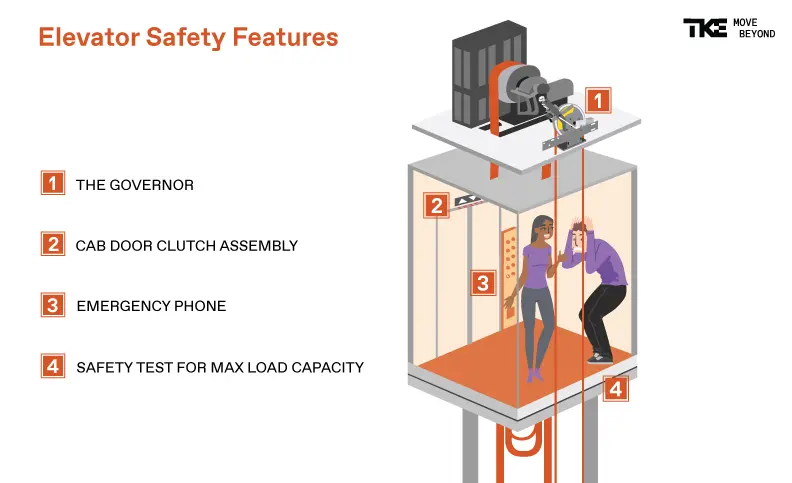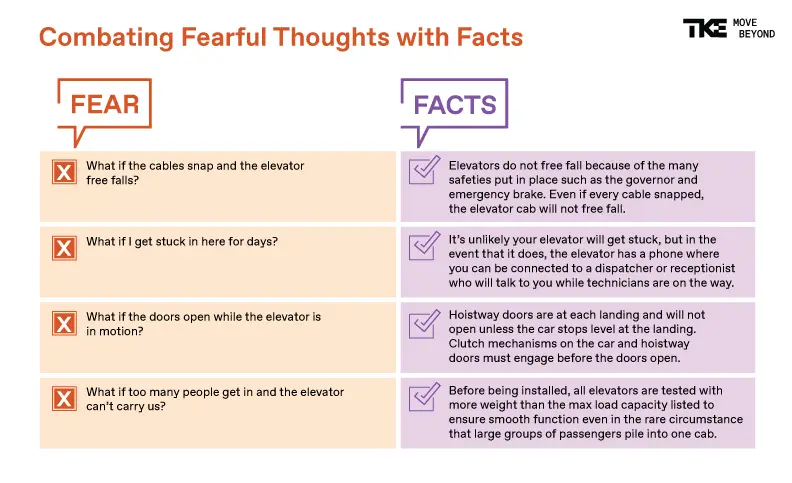Fear of Elevators: Are Elevators Safe?
For those of us who work in the elevator industry, it’s hard to imagine anyone having a fear of elevators. Seeing these machines at work and knowing the evolution of elevators, we wouldn’t think twice when stepping into the cab. Yet, we know that elevator phobias are very real, and media is partially to blame for that. Films will often portray elevators in a way that is not accurate in the slightest. Thankfully, we are here to assure you that none of the extreme scenarios you see on the big screen are possible.
In movies, hoistway doors will open when they shouldn’t, characters will get stuck in elevators for days and a superhero will need to save the cab from free falling down the shaft. It may seem like a harmless way to move the plot along, but myths like these contribute to the fear of elevators that a number of commuters suffer from. Elevators are a part of daily life, so being afraid of them can inhibit many from experiencing the ease that they bring to tenants.
So how do you overcome your fear? Perhaps learning more about the many safety features that elevators have is a good place to start.
Are Elevators Safe?
Over the course of one day, elevators will globally carry 325 million people to their destinations. The worldwide popularity of the passenger elevator can be traced directly to its roots in safety. Before the 1800s, elevators were seen as a convenient way to move heavy items or as an attraction.
This all changed at the World’s Fair in 1853 when an inventor showcased his newest idea in front of a crowd. He stood in an elevator and had his assistant cut the cable that was holding him up. To their amazement, he only dropped a couple of feet — his new safety device caught the cab. This revolutionary invention is what we now call a “safety” activated by a governor. It is a component in every elevator you’ve ever ridden in.
Since the debut of the mechanical safety and overspeed governor, elevators have constantly evolved to become the safest form of vertical transportation — even better than stairs. Next time you are debating whether or not to take the stairs, take these safety features into account!
Elevator Safeties and How They Work

Now that we’ve talked a bit about the evolution of elevators, we can take a quick peek at the devices themselves. We previously mentioned the safeties and governor, but how do they actually work? How can you be sure it will never fail?
The governor is a device that detects overspeed as it is coupled to a rope attached to the traction elevator car. If the governor overspeed switch is activated, it will cut the power to the machine motor and apply the brakes. If the traction elevator car continues to overspeed, another mechanism will stop the governor rope and will activate the mechanical safeties as a last resort. This set of mechanical safeties that will automatically engage or clamp down on the rails, bringing the cab to a stop if it begins travelling too quickly in the downward direction. This is a requirement on all elevators everywhere and does not need any electricity or power to function.
If this unlikely scenario were to happen, there is an elevator phone which can be used to reach a dispatcher who will talk you through the situation while technicians come to help.
To protect you from harm, elevator doors remain locked while you wait for help. The car must be level with a destination floor landing, and clutch mechanisms on the car and hoistway must engage before the doors open. Most elevator-related accidents happen when passengers panic and interfere with the doors that are meant to keep them safe, so it’s best to try to relax and know that help is on the way.
These are just some of the many devices that are required by law to be in each elevator you step foot in. Technicians test elevators with more than their maximum load to ensure that there isn’t a scenario where they would be unsafe for passengers.
Be Mindful and Remember the Facts
At the end of the day, we could write hundreds of articles on elevators and how they are made to withstand many extraordinary scenarios, but it still might not cure your fear. In any case, we hope that knowing these elevator safety facts will help you to combat any fearful thoughts you may have and stay calm while you are carried to your destination by a reliable form of vertical transportation.

The chart above illustrates some thoughts you may have and facts to remind yourself of when they arise. A good tip is to also bring a friend along with you for the ride who can help to reassure you. We hope that the information you’ve learned here can help in the future. For information on elevators and their safety features, please take a look at our Classroom On-Demand glossary.
 United States
United States

